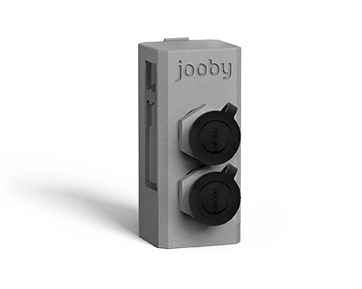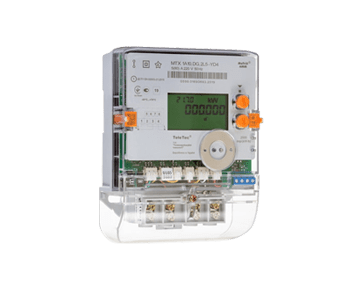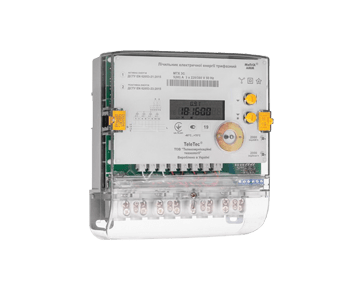Manual utility accounting is becoming a thing of the past. For over 10 years already, electricity suppliers in the US, China, and Western Europe have been automatically collecting readings with smart meters over wireless data channels.
Let’s dive in and see what the advantages of remote electricity accounting are and what LoRaWAN® technology has to do with them.
Manual collection of readings, an obsolete practice
Most consumers in Ukraine still have ‘dumb’ electronic and analog electricity meters. As a result, suppliers are forced to manually collect readings, which requires inspectors or asking consumers to submit readings themselves by phone or on the internet. As a result, numerous problems arise for utility suppliers:
- Late submission of readings. Consumers forget to submit readings on the specified date.
- Hindered access to meters. Consumers may be away from home when the inspector visits or they may even refuse to let the inspector in.
- Errors. Sometimes consumers submit inaccurate data or the operator makes a mistake while adding them to the database.
- Discrepancies. Older meters of Precision Class 2 (especially induction ones) are less sensitive to low currents, e.g., phone chargers or home appliances in standby mode. Therefore, they may transmit erroneously low consumption data, and the supplier will charge less money for the same amount of electricity consumed.
- Tampering. Some meter models can be slowed down, stopped, or even re-configured to operate in reverse.
With smart meters, utility companies can avoid problems like these and even get additional functionality.
How smart electricity meters work
A built-in radio module grants smart features to the device. The module reads the pulses generated by the meter and stores them in its non-volatile memory. Radio modules send meter readings to utility companies via secure wireless communication channels (cellular data, 3G, or Wi-Fi).
Smart meter models may differ in terms of features. However, they all work on the same premise: they collect meter readings and transmit them to the server. Let’s consider how smart electricity meters work using the example of TeleTec’s MTX multi-rate meters.
There is a LoRaWAN® module installed on the meter’s motherboard. The device tracks the number of impulses proportional to the amount of energy consumed. The data is then stored in the meter’s memory and transmitted to the base station over a LoRaWAN® network once a day.
The base station then relays the data to the server; the impulse count is converted to kilowatt-hours and added to the previous readings. Then, utility suppliers can access the data on the server and process them in the format of their choice.
How LoRaWAN® modules transmit data
LoRaWAN® technology enables wireless data transmission over radio waves, which is especially convenient for detached houses, garages, and other free-standing buildings.
The data is transferred as follows: the module collects meter readings at a preset interval and sends them over a secure encrypted radio channel to a base station. Then, the data is transferred over an IP channel to the server, where the electricity supplier can access it. One base station can receive data from thousands of devices.
Advantages of smart electricity meters
‘Dumb’ meters only track consumption — it’s all they can do. Smart ones, on the other hand, are equipped with a radio module and additional sensors. They also often have onboard non-volatile memory.
Advantage:
Besides the consumer’s active and reactive energy consumption, MTX meters record amperage, voltage, and other parameters. The devices also alert the operator if there is a malfunction on the grid or meter.
Benefit:
Real-time monitoring of meter status and prompt reaction to emergencies.
Advantage:
Immediate remote disconnection of non-payers and re-connection thereof once the debt is paid to the supplier.
Benefit:
Management of energy supply to consumers and a means of motivating them to pay for utilities they consume.
Advantage:
Consumption data divided into three-time tariff registers.
Benefit:
Consumers can plan appliance operation with the best tariff in mind.
Advantage:
Detection of magnetic tampering and remote disconnection of consumers resorting to it.
Benefit:
Guaranteed impossibility of magnetic tampering on the part of the consumer. Fraud protection.
Advantage:
The device body is reliably protected from unsanctioned access.
Benefit:
Consumers will be unable to open the meter body and sneakily connect devices to it. Fraud protection.
Advantage:
Accurate electricity consumption tracking, including low current.
Benefit:
Housing cooperatives and property management companies will get accurate data and will be able to bill tenants for the entire amount of electricity consumed.
Advantage:
Max. amperage: 120 A
Benefit:
Consumers will be able to power more home appliances without overloading the electrical panel.
Advantage:
Calibration interval of 10–16 years. Five-year warranty.
Benefit:
Product quality guaranteed. A longer calibration interval decreases costs for electricity suppliers and makes meter operation more convenient for consumers.
Advantage:
Non-volatile memory
Benefit:
Preservation of data in the event of an electrical outage.
Where smart meters are used
Smart meters can be installed in apartments, detached houses, and small garages. In such cases, single-phase models designed for 220 V mains voltage should be used. Three-phase smart meters for 380 V mains voltage are an excellent choice for industrial facilities and high-consumption buildings.
Can an analog meter be converted into a smart one?
Readings can be collected remotely even from meters not equipped with a LoRaWAN® module. If equipped with a pulse output, a meter can be connected to an external LoRaWAN® module to extend its functionality.

The module is connected to the electricity meter; the data regarding the consumer and current meter readings are added to the system. Once configured, the module will automatically collect the readings and send them to the accounting system.
Infomir’s Jooby device range includes LoRaWAN® modules with two pulse inputs, which can add smart features to regular electricity meters.
Smart electricity meters provide electricity suppliers with accurate consumption data, enable the collection of statistics, and send network status data. They also enable the prevention of utility fraud and the disconnection of non-payers electricity. Smart meters can be used in private housing as well as in large industrial facilities and similar settings.




